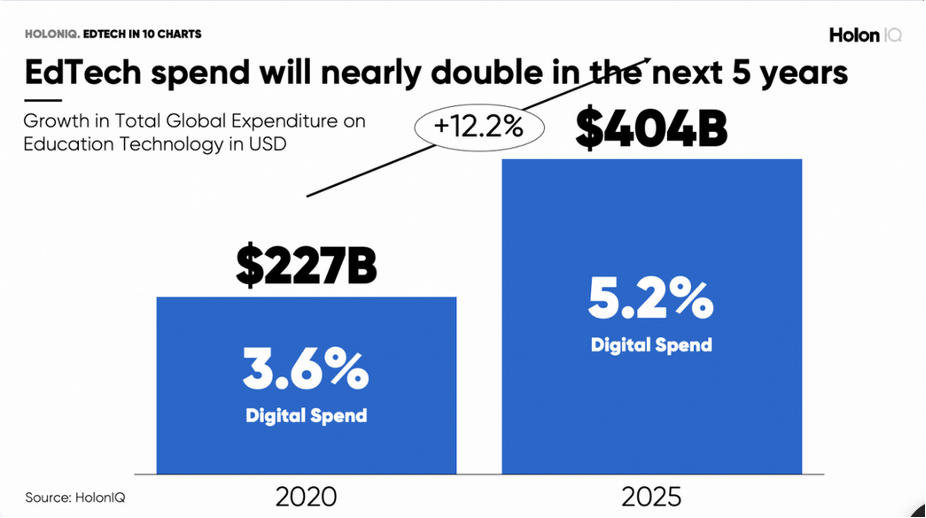In 2020, the global Education Technology (EdTech) market was valued at $227 billion, but the growth potential for this industry is immense. Projections show that from 2022 to 2030, this market is expected to experience an annual growth rate of 16.5%, which could lead to a 2.5-fold expansion from 2019 to 2025. By 2025, the market is estimated to reach a value of $404 billion. These figures demonstrate the rapid growth and vast potential of the EdTech industry in the coming years.
Edtech solutions have been gaining popularity in recent years, especially in the wake of the COVID-19 pandemic, which forced schools and universities to switch to online learning. However, despite the proliferation of EdTech products on the market, there is a notable lack of standardized cohesiveness among these solutions. This can make it difficult for educational institutions and big corporations to choose the right EdTech tools for their specific needs and goals.
One of the major challenges that arise from the lack of standardized cohesiveness in EdTech solutions is the overwhelming number of options available. Educational institutions and big corporations have to sort through countless EdTech products, each with its features, functionalities, and limitations, which can be a daunting task. This can lead to decision paralysis and can make it challenging to choose the right EdTech tools that are most relevant to their specific needs and goals.
Another significant challenge is the lack of interoperability among different EdTech solutions. Many EdTech products are designed to function as standalone solutions, which can make it difficult to integrate them into existing systems and workflows. This can lead to inefficiencies, duplication of effort, and compatibility issues, ultimately hindering the effective implementation of EdTech tools.
In addition to these challenges, the lack of standardized cohesiveness can also result in a fragmented user experience. Different EdTech solutions may have different interfaces, workflows, and user experiences, which can be confusing and frustrating for users. This can lead to a lack of adoption and utilization of EdTech solutions, which defeats the purpose of implementing them in the first place.
To address these challenges, standardization could be a solution. Standardization could help to streamline the EdTech market and reduce the number of options available, making it easier for institutions to select the right products for their needs. Functionality standards could help to integrate different EdTech solutions into existing workflows, improving efficiencies and reducing duplication of effort. Finally, a more cohesive user experience could help to increase the adoption and utilization of EdTech solutions, leading to better outcomes for students and employees alike.
Standardization of Edtech solutions is a pressing issue that should be of interest to educational institutions, corporations, policymakers, and stakeholders. The EU can play a crucial role in addressing this challenge by establishing a framework for standardization and promoting interoperability. This will create a more efficient and streamlined EdTech market, benefiting students, employees, and society as a whole. Taking action to address the lack of standardized cohesiveness in EdTech solutions is a critical step in building a better future for Europe and beyond.
Sources:


